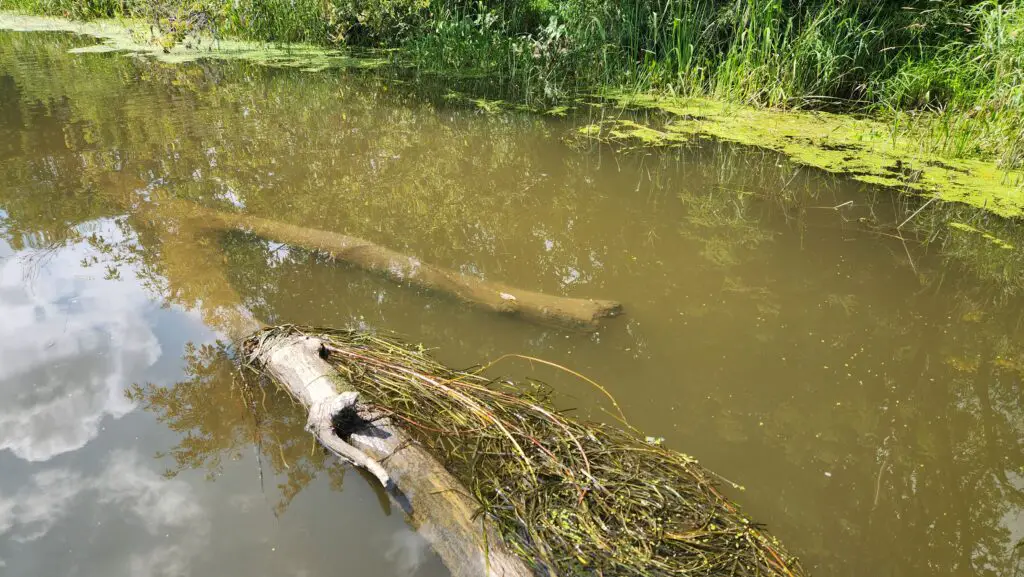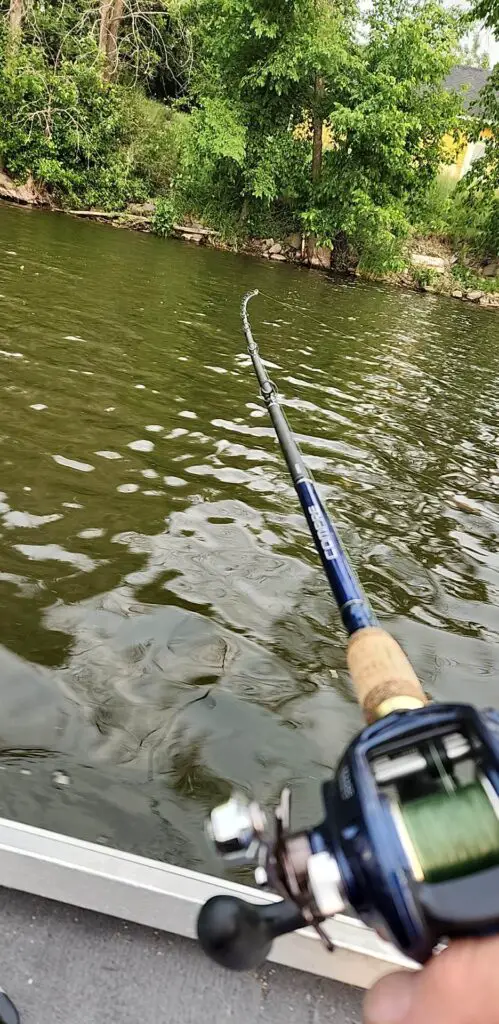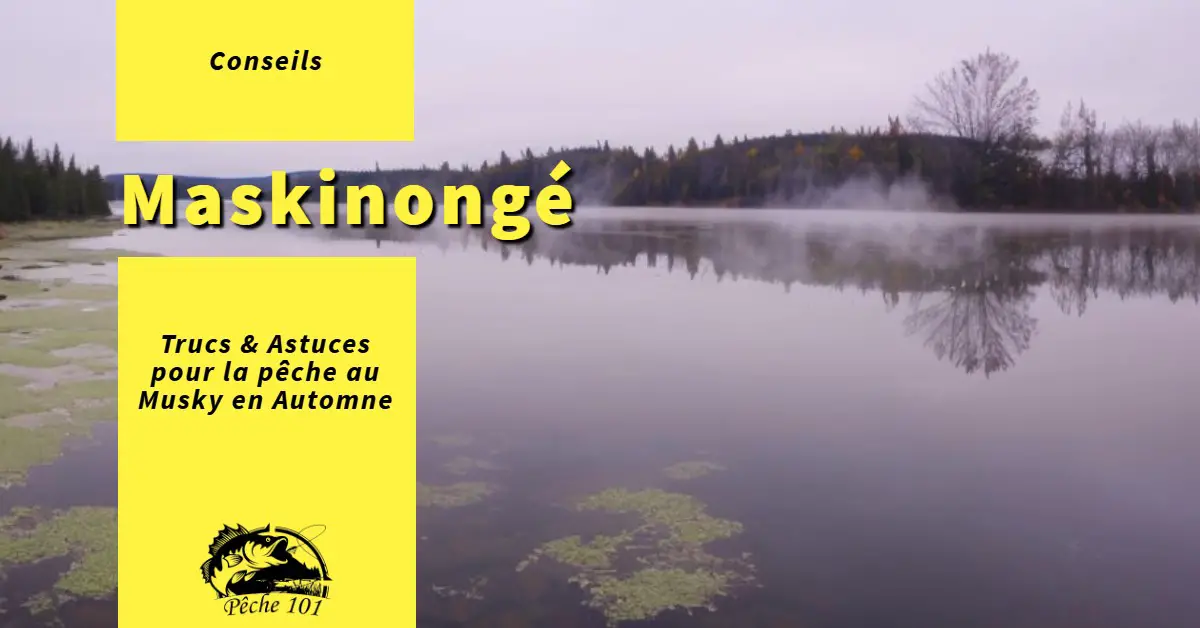As the leaves change color and the temperature drops, autumn muskie fishing offers you an exceptional opportunity to catch the "fish by 1000 casts".
This season offers some of the best chances of catching trophy muskellunge, as they become more active in their foraging before the winter months.
To get the most out of musky fishing in autumn, it's crucial to understand muskellunge behaviour during this season.
Important points for muskie fishing in autumn:
| Category | Information |
|---|---|
| Water temperature | - Early autumn: 15.5°C to 21°C - Late autumn: 4°C |
| Highlights | - Early morning - Late afternoons - Cloudy days |
| Early autumn habitats | - Lines of vegetation - Shallow areas with baitfish |
| Late autumn habitats | - Deeper waters - Near structures offering protection and ambush |
| Throwing techniques | - Shallow water: parallel to shoreline or vegetation - Deep water: Heavy lures, slow recovery |
| Target areas | - Healthy vegetation - Points, descents, underwater reefs - Rocks - Currents - Laydowns (submerged trees) |
| Recommended lures | - Large articulated crankbaits - Spinnerbaits - Soft plastic swimbait |
| Trolling speed | 4 to 6 km/h |
As water temperatures drop, these fish abandon their usual hiding places and roam more widely in search of prey, improving your chances of encountering one. Their increased movement and feeding make this an ideal time, especially if you're unfamiliar with the lake, river or reservoir where you're fishing.
The choice of appropriate baits and techniques also plays a vital role in the success of muskie fishing in autumn.
Both casting and trolling can be effective at this time.
With the right approach, a successful and enjoyable muskie fishing experience awaits you.
Article content
- 1 Fall muskie fishing conditions
- 2 Fishing techniques and strategies
- 3 Understanding muskellunge behavior
- 4 Frequently asked questions
- 4.1 What are the best lures for fall muskie fishing?
- 4.2 How do pike and muskie fishing techniques differ in autumn?
- 4.3 Where are the best places to go muskie fishing in autumn?
- 4.4 What time of day should I fish for muskellunge in the fall?
- 4.5 At what trolling speed should I fish for muskellunge during the fall season?
- 5 Author
Fall muskie fishing conditions
Weather and water temperature
During the autumn season, water temperatures start to drop compared to the warmer summer months.
In early autumn, you can expect water temperatures between 15.5°C and 21°C. As temperatures drop into the 4°C range in late autumn, muskie fishing can become even more rewarding.
Cooler water temperatures (at least 10 degrees) encourage muskellunge to increase their feeding in anticipation of the winter months.
Make sure you monitor water temperature when planning your fall muskie fishing trip, as it plays a crucial role in determining their activity and location.

Time of day
As daylight hours diminish in autumn, muskellunge feeding habits can change.
Early mornings and late afternoons are generally the best time for best opportunities to catch muskellunge during this period.
Make sure you're ready for the shorter days of autumn.
In addition, cloudy days can offer an advantage in muskie fishing due to increased underwater visibility and low light conditions, which encourage muskies to feed.

Seasonal changes
As the fall season progresses, muskellunge will move from their late summer habitats to fall feeding grounds.
Be aware of these seasonal changes when planning your fishing trip.
Early autumnyou can find muskellunge on the along vegetation lines and shallow areas where there is an influx of baitfish.
Late autumnmuskellunge tend to move around deeper and gather near structures offering protection and ambush opportunities for prey. Be sure to monitor oxygen levels too, as this can influence their preferred locations. Target vegetation.
Fishing techniques and strategies
In this section, we'll discuss various fishing techniques and strategies for fall muskie fishing.
As a muskie angler, understanding these strategies will increase your chances of success.
Throwing in deep and shallow water
In autumn, muskellunge can be found in both shallow and deep water.
As water temperatures drop, muskies are likely to be found in deeper water during the day, while moving to shallower waters to feed during periods of low morning and evening light.
To target muskellunge at these varying depths, you'll want to adjust your casting techniques accordingly:
- Throwing in shallow water Cast your lure parallel to the shoreline or vegetation lines, concentrating on areas offering good coverage for baitfish.
- Deep water casting Use heavier lures and a slower retrieve when casting in deeper water, allowing the lure to reach greater depths. Don't forget to cover different depths to find where the muskies are.
- Vegetation Focus on areas with healthy algae growth.
- Main lake structure Target points, descents and underwater reefs.
- Boulders Look for rock piles or areas with a hard bottom, as they tend to retain heat during the colder months.
- Current Muskellunge often position themselves near current seams or breaks in river systems, using the flow to bring prey within reach of their claws.
- Laydowns These submerged trees provide excellent cover for muskellunge.

- Match the food Select lures that closely resemble in size and color the muskellunge's preferred food in the area.
- Vary your speed Experiment with different recovery speeds, as muskellunge can be fickle in their preferences, especially during the colder months.
- Changing approach Don't hesitate to change your lures or tactics if you're not having success. Be persistent and adaptable in your efforts to catch fall muskie.
Understanding muskellunge behavior
Eating habits
In autumn, the muskellunge goes into a feeding frenzy to prepare for the coming winter.
When baitfish, such as whitefish and lake minnows, begin their migration, muskellunge follow them for easy prey.
During this period, muskellunge rely on prey such as the walleye and perchwhich are more abundant and densely grouped.
Muskellunge seek out areas where baitfish abound in the hope of increasing their chances of success.
Therefore, late autumn is an ideal time for you to target and catch a trophy muskie.
Habitats and locations
To catch a muskellunge in autumn, you need to understand preferred habitats and seasonal movements.
As water temperatures drop, muskellunge become more comfortable in shallow waters. They can be found around structures such as points and descents, which provide them with shelter and ambush spots to catch their prey.
Another important habitat to target is that of the vegetation beds.
As autumn progresses, the green vegetation beds die, prompting muskellunge to move to hard-bottom areas with intact green algae.
This transition offers an excellent opportunity for you to target these predators. By focusing on shallow waters with green vegetation beds or hard-bottomed areas, you increase your chances of hooking a muskie in autumn.
Frequently asked questions
What are the best lures for fall muskie fishing?
In autumn, muskellunge are more aggressive and tend to feed abundantly to accumulate fat for the winter.
Some of the best lures to use for muskie fishing this season are large articulated crankbaitsand spinnerbaits and online soft plastic swimbaits.
These lures mimic the prey that muskies target, such as large baitfish and bottom-feeders.
Experiment with different models and colors to find the ideal combination that works best in your area.
How do pike and muskie fishing techniques differ in autumn?
While both pike and muskellunge are aggressive autumn predators, there are differences in their fishing techniques.
Muskellunge tend to prefer slightly deeper water, so it's advisable to target descents and underwater structures when fishing for them.
Pike, on the other hand, are often found closer to shore and in grassy areas, so it's best to cast lures along these areas when pike fishing.
Overall, it's essential to recognize these differences and refine your fishing approach accordingly.
Where are the best places to go muskie fishing in autumn?
Ideal locations for fall muskie fishing include lakes, rivers and reservoirs with abundant underwater structures such as hummocks, submerged algae beds and rocky outcrops.
Muskellunge often use these areas to ambush their prey, so it's advisable to concentrate your efforts in these areas.
Bear in mind that conditions can vary from one body of water to another, so it's always important to be ready to adapt your strategy to the specific location where you're fishing.
What time of day should I fish for muskellunge in the fall?
In autumn, muskellunge can be active throughout the day, but are often most active in the early morning and late afternoon.
These periods generally offer the best opportunity to catch active fish as they are more likely to feed.
Be prepared to spend long hours on the water as muskellunge are known as "the fish with 1000 casts" due to their elusive nature.
Don't forget that patience and perseverance are essential when targeting these difficult predators.
At what trolling speed should I fish for muskellunge during the fall season?
When trolling for muskie in autumn, it's important to adapt your speed to the activity of the fish.

As muskellunge are known to feed more aggressively during this season, consider trolling at slightly higher speeds, around 4 to 6 km/h, to trigger their predatory instincts.
Pay close attention to the depth and action of your lure at these speeds and adjust accordingly to maintain optimum presentation to entice muskies to attack.

